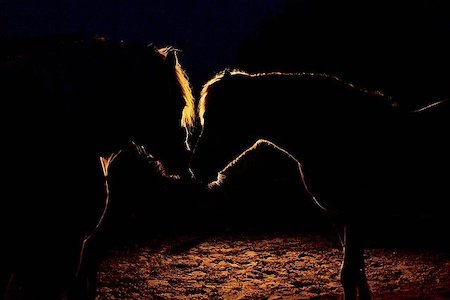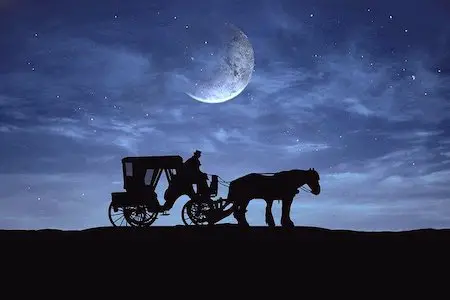The answer to the question if horses can see in the dark is a little complicated. Horses have been bred for many years with different purposes in mind, some of which are better suited to seeing better in the dark than others. For instance, it would make sense that draft horses might not need as good night vision because they mostly do their work during daylight hours.
Can horses see in the dark? Horses have excellent night vision, but they cannot see in total darkness. Horses can’t see colors as humans do, but they are able to detect shades of gray. They use their peripheral vision to navigate at night and avoid obstacles in the dark.
Horses don’t rely on their sight as much as other animals because they communicate with each other through vocalizations and chemical signals that travel through the ground instead of air currents.
How Well Can Horses See in the Dark
Horses are one of the few species that can see in near-complete darkness, and they have a better sense of smell than humans. They also have excellent hearing so you might be able to hear them from far away if they were spooked by something like an owl or coyote.

Horses have the most sensitive vision of any land mammal, with an estimated 180 degree horizontal field of view. Horses also have a reflective layer behind their retinas that amplifies light in dim conditions. These adaptations make it easier for horses to see at night and during the day when there is not much light available.
However, horses cannot see as well as humans do because they are nearsighted and don’t have color perception as we do. They can only distinguish between shades of gray and white – but this isn’t necessarily a disadvantage since they rely on smell more than sight when looking for food or predators anyways!
Can Horses See in Front of Them
Horses have a blindspot that is in front and behind them. One safety rule when riding the horse for the first time, as mentioned previously, is to speak up from directly behind it so you can be sure they don’t step on anything or run into something with their hind legs if they get startled by an insect buzzing nearby!
Horses focus on objects in front of them by barely turning their heads. When a rider is riding the horse, it’s important for them to allow that movement. Horses will instinctively want to do this as they are trying to see things more clearly and in doing so you’ll be able to make sure you are not blocking anything from view or distracting the animal with unnecessary movements.
When you are riding a horse, allow your animal space for its head and neck. This way the horses can see objects in more clear detail.
How Far Can a Horse See
Many people would guess that horses are nearsighted because of their protruding eyes, but they actually have an impressive range of sight. Horses can see colors as well as objects up to two miles away – that is six times farther than humans! Horses also have night vision and they can see images even in the dark.
A horse can see an object that is about 1.25 miles away or 2.5 kilometers away on a clear day.

Horses have the fastest vision of any animal in the world because they have more rods and cones than humans (up to 120 million). This means horses are able to see in much greater detail than we do, but it also makes them susceptible to bright lights which can blind them if they’re looking at something too close for too long.
Can Horses See 360 Degrees
Horses are often considered to have a 360-degree field of vision, but this is not the case. They have eyes on both sides of their head and each eye has a large field of vision. This is because they need to be able to see what is happening all around them for protection, as well as so they can find food in tall grasses or thick bushes.
Horses’ eyesight is excellent at detecting motion from far away distances, which helps them avoid predators like coyotes or wolves.
Horses are one of the few mammals that can see 360 degrees. They have eyes on both sides of their head and each eye has a large field of vision. This is because they need to be able to see what is happening all around them for protection, as well as so they can find food in tall grasses or thick bushes. Horses’ eyesight is excellent at detecting motion from far away distances, which helps them avoid predators like coyotes or wolves.
However, their peripheral view is limited to what is happening on either side of them, so they don’t usually notice things happening behind their backs.

